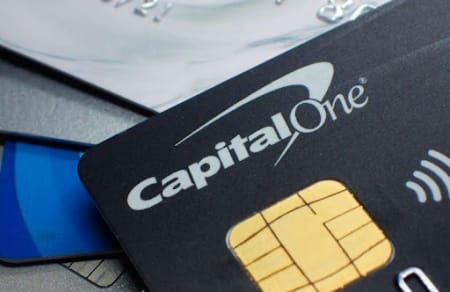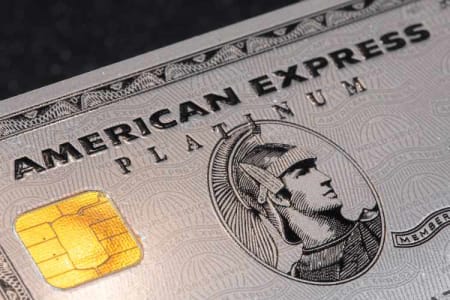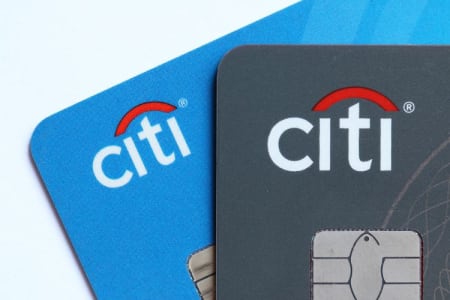Credit Cards Articles & Guides
Learn about how to best utilize your credit card to take back control of your finances and credit score
This site is a free online resource that strives to offer helpful content and comparison features to our visitors. We provide free access to our comparison tools and helpful content through advertising compensation from companies that appear on our site (this may include when a visitor's application is approved). While this compensation may influence which products we write about and where they appear on the site, it does not affect our reviews or opinions. Our partners cannot pay us to secure favorable reviews or recommendations. Company listings on this page do not imply endorsement. We do not feature all providers on the market. Except as expressly set forth in our Terms of Use, all representations and warranties regarding the information presented on this page are disclaimed. The information, including pricing, which appears on this site is subject to change at any time.

The Secret Perks of Credit Cards You’re Probably Not Using
You're using your credit card for points and cash back, but you may also be overlooking valuable benefits that could save you hundreds of dollars annually.

APR Confusion? Here’s What Credit Card Companies Don’t Explain
When you see "18.99% APR" advertised on a credit card, you might think you understand what you're signing up for.

Understanding Credit Card Rewards: Points, Miles, and Cash Back Explained
Credit card rewards typically fall into four main categories: airline miles, hotel points, flexible travel rewards, and cash back, each with different redemption options and value. To maximize rewards, consider your spending habits, compare transfer options, and look for discounted award programs. Read the full article to explore expert tips on getting the best value from your credit card rewards.

Premium Credit Cards Retain Their Appeal Despite Mounting Fees, Survey Reveals
Credit cards are a great resource for turning everyday spending into measurable value, and many high-profile cards compete with each other to offer increasingly exciting benefits. But fees are rising too.

Credit Card Spending Trends: How Defaults Are Reshaping Consumer Behavior
As credit card defaults soar to alarming heights, consumers are scrambling to reinvent their financial playbooks.

Are Premium Credit Cards Worth the Fee? A Deep Dive on Benefits You'll Actually Use
You're considering a premium credit card with an annual fee of $550 or more, but most cardholders only use 30-40% of available benefits.

What Happens to Interest Rates During a Recession?
When a recession hits, credit card rates can swing dramatically—costing you thousands. Here's what to do.

Credit Card Balance Transfer Calculator: Your Debt Freedom Tool
Carrying $5,000 in credit card debt at 18% interest costs you $900 annually in interest alone. But what if you could reduce that cost to zero?

Chase vs. Amex: Which Rewards Program Is Actually Worth It in 2025?
You're choosing between Chase Sapphire and American Express Platinum Card®, but the decision isn't obvious. Chase offers 1 cent per point in cash back versus Amex's 0.6 cents—a 67% difference.

Travel Insurance Through Credit Cards: What You Need to Know
Credit card travel insurance offers financial protection against trip cancellations, delays, lost baggage, rental car damage, and travel accidents when you pay for your trip with an eligible card.

A Guide to Getting Airport Lounge Access With a Credit Card
Airport lounge access credit cards provide travelers with exclusive perks like complimentary food, drinks, and a quieter space to relax before flights. To choose the best card, consider lounge availability, fees, and travel habits. Read the full article for expert recommendations on maximizing your airport lounge access benefits.

Can Credit Cards Help During a Recession? Everything You Need to Know
While millions of Americans struggle with shrinking budgets during recessions, strategic credit card use can help protect your finances when you need it most.

Stop Wasting Your Points: 6 Reward Redemption Mistakes to Avoid in 2025
You've worked hard to accumulate credit card points and airline miles, but one bad redemption decision can waste months of earning.

How to Get the Most Out of Your Credit Card Rewards
Credit card rewards can unlock excellent benefits, from free flights to cash back, all with minimal effort on your part.

The Rise of "Buy Now, Pay Later" vs. Credit Cards: What You Should Know
Managing your finances effectively often means navigating various payment options.

What Charges Can You Put on a Business Credit Card
Maximize your business credit card's potential with these smart charging guidelines.

How to Get the Most Out of Your Business Credit Cards
Your business credit cards could be working much harder for your company—here's what most entrepreneurs miss.

Is Credit Card Interest Tax Deductible for a Business?
Are you missing out on tax savings by not deducting your business credit card interest?

What Does the CFPB Closing Mean for Credit Card Owners?
The Consumer Financial Protection Bureau faces a leadership transition that may affect its credit card regulations.

What Happens If You Don't Pay Your Credit Card on Time
Behind every credit card's convenience lies a payment timeline that shouldn't be ignored.

5 Types of Credit Cards Small Business Owners Should Get
Every financial decision you make as a small business owner shapes your company's future, starting with the credit card you select.

A Guide to Capital One Miles
Capital One Miles are a flexible rewards currency earned through Capital One travel credit cards, redeemable for travel, gift cards, online shopping, and even cash back. Maximizing their value involves using travel transfer partners, earning bonuses through strategic spending, and pairing a Capital One Miles card with a high-earning cash-back card.

How to Read Your Credit Card Statement
A credit card statement provides a detailed summary of your spending, payments, fees, interest charges, and rewards during a billing cycle, helping you track your finances and detect potential errors. To learn how to read your statement effectively and avoid costly mistakes, read the full article for expert insights.

Maximizing Cash Back: Strategies for Using Multiple Cards
Using multiple cash back credit cards strategically can help maximize rewards by leveraging different earning rates across various spending categories. However, managing multiple cards requires organization to avoid missed payments, overlapping benefits, and potential debt accumulation.

Why Was My Credit Card Application Declined?
Credit cards are powerful tools for building credit, managing expenses, and earning rewards.

What Is a Balance Transfer Credit Card?
Credit card debt can feel overwhelming when most of your monthly payment goes toward interest charges.

Understanding Cash Back Categories: How to Optimize Your Spending
Cash back credit cards allow you to earn rewards on purchases, typically through flat-rate or bonus categories like dining, groceries, and gas. Maximizing rewards depends on understanding your spending habits and choosing the right card. Consider sign-up bonuses, caps, and redemption options to boost earnings. For more insights, read the full article below.

How to Do a Balance Transfer
A balance transfer moves debt from a high-interest card to one with a 0% intro APR, helping you save on interest. To do it, choose a card, check fees, apply, and transfer the balance while creating a repayment plan to avoid interest after the promo period. Avoid new debt on old cards and ensure savings outweigh fees. Read the full article for a step-by-step guide and best practices.

Balance Transfer Fees Explained: Are They Worth It?
A balance transfer card can save you interest by moving debt to a 0% intro APR card, but fees (3%–5%) add costs. To decide if it’s worth it, compare savings to fees and have a repayment plan. Choosing a low-fee card, negotiating, or transferring less can help. Avoid new debt to make it effective. Read the full article for tips on maximizing savings and avoiding pitfalls.

Building Credit Responsibly: Best Practices for Credit Card Use
Using a credit card responsibly can help build credit, especially for those with limited history. Start with a secured card if needed, keep credit utilization under 30%, and never miss payments. Setting up autopay, avoiding debt, and becoming an authorized user can also boost your score. Credit improvement typically takes 6+ months. Read the full article for expert strategies on building credit.

Credit Card Tips: 10 Ways to Stay on Track for This Year's Money Goals
Credit cards can do more than just facilitate payments—they can be powerful tools for achieving your financial goals, from building credit to saving for a house.

How to Get Approved for a Credit Card: A Step-by-Step Guide
Applying for a credit card can be a straightforward process, but getting approved isn’t always guaranteed.

The Ultimate Travel Credit Card Guide
Travel expenses add up quickly. Between flights, accommodations, and transportation, a single trip can cost thousands—but the right credit card can significantly reduce these costs.

What is a Credit Builder Credit Card?
Which came first, the chicken or the egg? The logic behind this age-old causality dilemma also applies to the following question: how do you build credit if you have no credit? After all, if you have no credit or bad credit then it’s almost impossible to qualify for a conventional credit card or loan.

Credit Card Rewards: A Guide
Gone are the days that you whip out cash to pay for everything. Most of us use debit or credit cards to pay for everything from weekly grocery shopping to funding our dream vacation. What if you got a small kickback for every purchase you made though? That’s where reward credit cards come into play and can give you more perks for everyday spending.

Credit Cards vs. Debit Cards: Understanding the Differences in 2025
When it comes to managing your money, choosing between a credit card and a debit card can be confusing.

A Guide to American Express Membership Rewards
American Express Membership Rewards lets cardholders earn points for travel, statement credits, gift cards, and more. Maximize rewards with spending multipliers, welcome bonuses, and Amex Offers, or transfer points to travel partners for added value. Choose a card that fits your spending and take advantage of promotions. Want to optimize your rewards? Read the full article for expert tips.

Revenge Travel on a Budget: Cards That Help You Fly First Class for (Almost) Free
You're ready to make up for lost travel time, but luxury revenge travel seems financially out of reach at first-class prices of $5,000-15,000 per ticket.

Which Credit Cards Offer Lounge Access Without Flying Business Class?
While business class passengers enjoy quiet lounges with free food and comfortable seating, you're stuck at crowded gates paying airport prices.

A Guide to Chase Ultimate Rewards®
The Chase Ultimate Rewards® is a rewards program where users can earn Chase Ultimate Rewards® points through their Chase credit cards, which can be redeemed in many ways, including for travel or cash back. You can strategically maximize your earnings and get more value from your rewards through bookings made on the Chase Travel and Dining portals.

A Guide to Citi ThankYou® Rewards
The Citi ThankYou® Rewards is a high-value credit card rewards program available to eligible Citi credit cardholders. Through this program, you can earn Citi ThankYou® Points when you make purchases with a qualifying Citi credit card. There’s a lot of versatility in how you can redeem your ThankYou® points, including cash back, gift cards, points transfer, and travel bookings.

Is the Apple Card Still Worth It in 2025? Pros, Cons & Better Alternatives
You're considering the Apple Card for its sleek design and Apple ecosystem integration, but its 2% cash back on Apple Pay purchases pales compared to cards offering 3-5% in popular categories.

How Can You Build a Credit History?
Your financial future hinges on a credit history that impacts everything from loans to housing—but how do you start from scratch?

The Truth About Minimum Payments—and How They Can Hurt You
Making only the minimum payment on your credit card might seem like a manageable approach to handling debt, especially during financially challenging times.

5 Credit Card Mistakes to Avoid in Your 30s
Your 30s often bring significant financial transitions—from career advancements and homeownership to growing families and increasing responsibilities.

Credit Card Skimming Is Getting Smarter—Here's How to Stay Safe
Credit card skimmers are now nearly invisible, targeting both physical terminals and online payments with wireless technology. Stay safe by using contactless payments, inspecting card readers, and monitoring your accounts regularly.

Should You Use a Credit Card for Back-to-School Spending? Here's When It Makes Sense
The back-to-school season can put significant pressure on family budgets, with costs for supplies, clothing, electronics, and activities quickly adding up. Many parents consider using credit cards to manage these expenses.

5 Hacks to Turn Everyday Spending into $1,000+ in Cash Back Rewards
Most Americans spend over $77,000 annually on all household expenses, including essentials like groceries, gas, and utilities.

